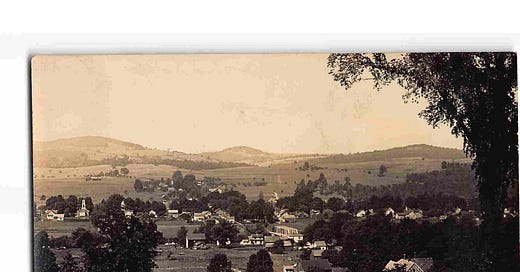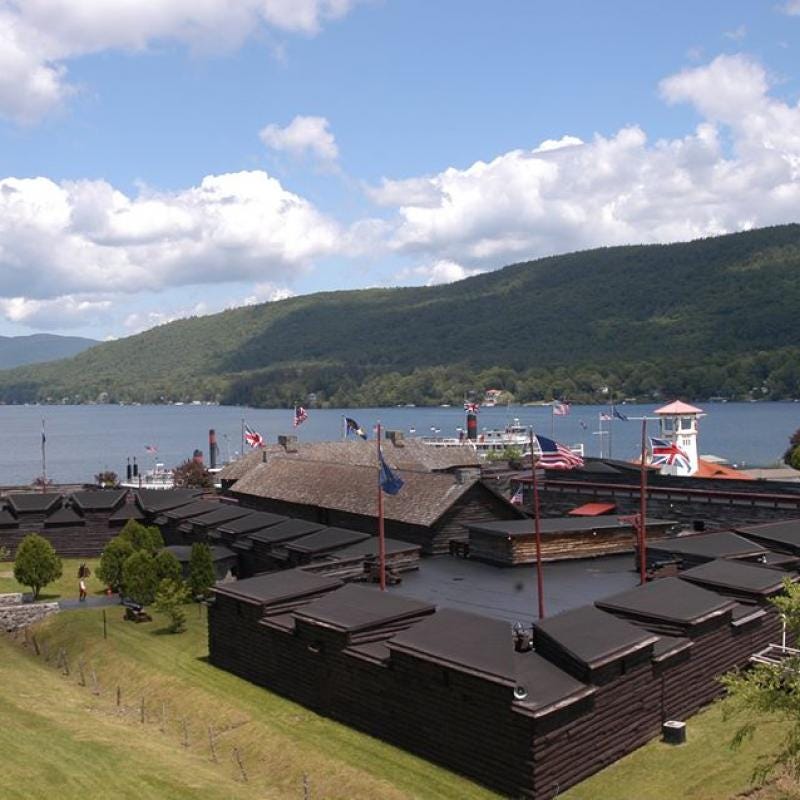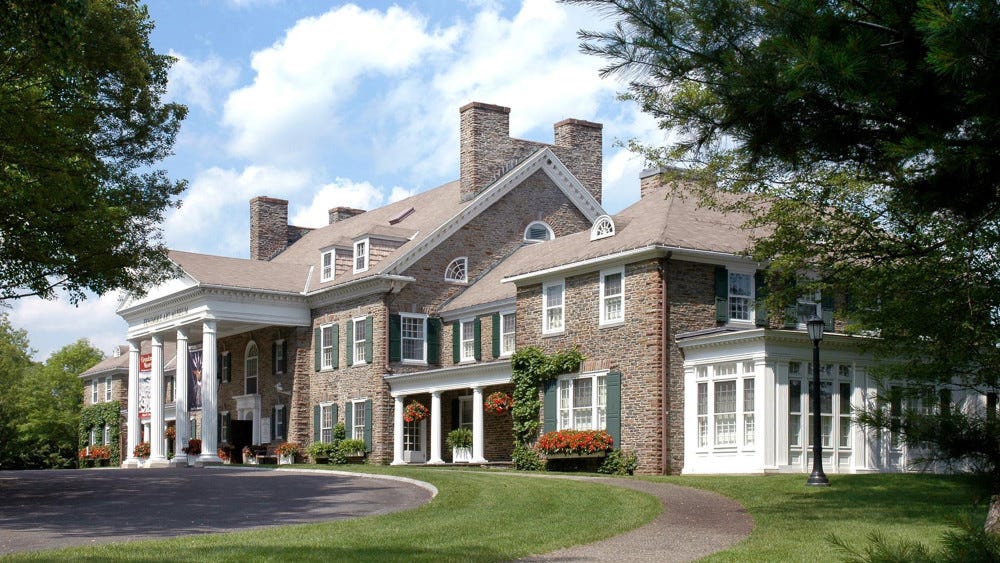(Photograph of South New Berlin, NY, probably around 1905)
When I was in junior high, back when dinosaurs roamed the earth, we learned New York State history in 7th grade. I always found history interesting, and still do, but New York State history was especially fascinating to me, primarily because we lived in the middle of it. We could visit the places that made history, some of which were only a few miles away.
We had rudimentary American history in 8th grade, and then in high school it was a combination of world history, which back then was 80% British history and rulers, French kings and World Wars I and II, and a more in-depth American history, with healthy dollops of geography and civics. Civics, especially, should be a required subject again, because most Americans are abysmally ignorant of how government on any level is set up and works, or how laws are passed, but I digress.
Most of us in our small, rural upstate New York school had never really been anywhere, and some would never go beyond fifty miles away from our town in their lifetimes, so world history and most of American history really had no real “there” there to some. We couldn’t visit Lexington and Concord, couldn’t see the battlefields of the Civil War, or experience the majesty of the Grand Canyon.
Most had no emotional or personal connection to European history either, although a very few kids were one or two generations removed from European immigrants who came to the United States after World War II and were primarily farmers.
In the days before personal computers and the internet, we couldn’t easily visit these lands or sites, not even in films. Our school did not have the budget for a lot of fancy visuals and learning tools. What we did have was National Geographic magazine and some dedicated and knowledgeable teachers.
I grew up in Gilbertsville and went to junior and high school in the town next door, called South New Berlin. Gilbertsville is in Otsego County and SNB is across the county line, in Chenango County. Both are part of what the New York State tourist bureau now calls “Leatherstocking Country” in Central New York. The area is named after James Fenimore Cooper’s novels about the area around Cooperstown made famous in his early 19th century novels; the most well known being Last of the Mohicans.
New York State history has more James Fenimore Cooper in it, so we’ll get back to him.
We learned a lot of interesting things in NY history, some of which have stayed in my brain since. New York is a big state, larger than some countries, and an important state in the nation’s history, so studying the state was certainly a year-long course. I don’t remember hardly any study of New York City or Long Island, or the NYC suburbs in there, either. It was all upstate, including the Catskills, the North Country, the Capital Region, and Central and Western New York, including the Finger Lakes, Lake Ontario and the Thousand Islands.
(Otsego and Chenango Counties, Central NY state)
Since we lived in a small village, and were surrounded by other small villages, and some larger towns and even a small city or two, we learned about local settlement. We also learned about the structure of towns. I still remember this vividly, because it was something that we could easily see, map out for ourselves and know to be true.
Some villages and towns were crossroads communities. The town grew up around the intersection of two roads, usually prominent routes established in colonial times, those often based on Native American trails. Looking at a map, you’d see the clusters of businesses and civic buildings, like churches, the post office, and government buildings radiating out away from the intersections in all directions. Interspersed and clustered near the core were houses, usually the homes of the affluent.
As you moved farther out from the center, the houses thinned out, as did the wealth, and then the town ends and you are back in open fields. There was usually a cemetery on the outskirts of town, and perhaps the school might be towards the end of town, too, in the other direction, where there was more room for athletic fields and expansion. South New Berlin was a textbook crossroads town.
Some towns were village green towns, arranged around a central civic park space, often home to a courthouse or a large church, faced by the village green. Originally, most village greens started out as a commonly used pasture. The nearby city of Norwich is an example of a village green town. There are linear villages that grow along a river or some other natural feature, or even a railroad line. Troy is a classic linear village that runs long and narrowly along the Hudson River.
There are company towns which grow up around an industry or employer. Textile mill towns like Cohoes or Little Falls, NY are classic mill towns. And you have more modern towns that were established on a grid, with specific areas marked out as residential, business, industrial, etc.
Gilbertsville is not technically a crossroads town, but almost. It grew up around a central business area that formed a “T” with homes and businesses, including the Major’s Inn, stores and a tavern along the top bar of the “T,” and the central business district called the Market Block radiating down the the “T.” That included stores, a bank, the post office, etc, followed by homes, with the school towards the base of the “T.”
I’m sure some people are now nodding off, but I found this fascinating, because I could look at Gilbertsville, South New Berlin and the other towns around us and see this. Today, in 2022, I realize this is part of a field of study called Urban Planning, but we students certainly didn’t know that. We didn’t know from “urban.”
Anyway, New York is full of history. I know our state’s tourism board always touts this, but it really is true. A lot of important events and people who made American history came from New York. Since we lived in “Leatherstocking Country,” we learned a lot about the French and Indian War, much of which took place in New York State between 1754 and 1763.
The war was between France and England, over control of North America east of the Mississippi. The fighting enveloped Ontario, Quebec, the Eastern Provinces and in the US, the colonies along the Eastern Seaboard down to Virginia, and across to the Ohio territory. Both European nations sent thousands of troops to North America, and both enlisted Native American nations to be on one side or the another, working to use the animosity between certain tribes to their advantage.
Both also expected their colonial settlers to join in to fight under the flag of their parent nation. After seven long years of fighting, England won, taking control of Quebec and French Canada, putting all of Canada under British rule, something French Canadians have never forgotten. France lost control of everything they had on the North American continent.
The unintended consequence of the war was an awakening of American independence. Most colonists were conscripted into fighting and didn’t like it. James Fenimore Cooper’s novels make that clear, as do many other sources. George Washington and other Revolutionary War generals cut their teeth in this war. And don’t get me started on what this did to the many Native American tribes who fought on both sides. They lost more than anyone else, now that England and Spain divided up the continent between them.
Many of the most important battles in the war took place in NY; Fort William Henry, Fort Oswego, Fort Niagara, all of them were in upstate NY. Most students today don’t even learn about the French and Indian War. That is just one example of New York history that’s largely forgotten. A lot of New York historians, educators, museums, municipalities and more wanted to keep New York’s rich history alive.
In 1899, a group of them founded the New York Historical Association. They were primarily interested in early New York history, including the French and Indian War. They met in the town of Lake George, near Fort William Henry, and drew up their goals. They wanted to make sure the documents, historical materials and the sites of history were preserved in a central location.
(Fort William Henry Museum via visitlakegeorge.com)
In 1926, one of the founders donated his home in Ticonderoga for a museum and left an endowment. About ten years later, businessman Stephen Carlton Clark, whose family owned most of Cooperstown, donated Fenimore House, the 1920’s replica of James Fenimore Cooper’s family estate, to the Association. Clark was a fascinating character. His family built the exclusive Otesaga Hotel in Cooperstown and founded Bassett Hospital there, as well. Stephen Clark was responsible for creating the Baseball Hall of Fame and the Farmer’s Museum in Cooperstown, too.
Fenimore House contains not only an impressive collection of documents and historical information, and is home to the New York State Historical Association, it is also a world-class art museum, much of it due to Clark. Today, it’s the Fenimore Art Museum, and is still associated with the Farmer’s Museum, practically across the street.
Beginning in the 1940s, the Historical Association established a youth program called the Yorkers. It was advertised as a club for “junior historians.” In order to have a Yorker club in your town or school, one only needed an adult sponsor and a group of at least five or more students, all registered with the larger Yorkers organization. The individual clubs belonged to a regional society, which in turn were all answerable to the state society, and its officers.
The statewide organization had a magazine called the YORKER which came out bi-monthly, and a yearly convention in the spring. Any Yorker member could submit an article to the YORKER, and all “junior historians” were encouraged to do so. Membership also came with a jaunty felt patch and a membership card. This enabled a member to have free entrance to any of the Historical Association’s museums.
Members were not only encouraged to write for the YORKER, they met to go on trips to historic sites, they wrote plays, and essays, collected historic books an objects for general display, made murals, and helped out local historians and societies with their programming and historical celebrations.
Yorkers were the original NY state history nerds. Of course, I was a Yorker.
South New Berlin’s Yorker chapter was sponsored by our junior high history teacher, Mrs. Johnson. She taught New York State and American history. We had another history teacher who taught high school history. Mrs. Johnson’s parents immigrated to the United States from Sweden or one of the other Scandinavian countries, probably around the beginning of the 20th century. She could tell great stories about growing up on the family farm, which in our area, hadn’t changed all that much in 200 years. She was fiercely proud of being an American and had a special love for NY history.
We had our Yorker meetings at her house, in her cavernous basement rec room. We had a pretty large club, considering the class sizes were about 30 kids in each grade. We must have had around 40 members. It’s funny the things you remember, I remember a Yorker Christmas party, where I made and brought popcorn balls. Popcorn balls were my go-to contribution to parties because they were easy to make, although you could get burned by the hot syrup. They were so good! Anyway…
What did we do at these meetings? Sit around and discuss history? I don’t remember, I doubt it. Not even I could have stood that for too long. We went on a lot of trips, which is probably why we had any membership at all. We travelled all over the state to historic sites. Since the school sponsored the club, we went in a school bus.
We visited Corning, to see the glassworks, we went to Oswego to see the fort and the nuclear plant, on the edge of Lake Ontario, one of the first in the state. We went to Albany, to the State Capitol, and the State Museum, we went to Fort Ticonderoga, and Watkins Glen, we went to Palmyra to see where the Church of Latter Day Saints, the Mormons started. It wasn’t far to see towns along the Erie Canal.
(Fenimore House Museum, Cooperstown via thisiscooperstown.com)
We went to Utica to the Munson Williams Proctor Museum, and we went to Cooperstown. We went to Cooperstown a lot, since it was only about 25 miles away. We visited the Farmer’s Museum and once, to Fenimore House. We never went to the Baseball Hall of Fame, however. I don’t think Mrs. Johnson thought that was historical enough.
The Yorkers had a small museum with some local South New Berlin artifacts and ephemera that we kept on the second floor of the SNB town library. I think we had some arrowheads, some old postcards, newspapers and photographs, farm implements, maps and stuff like that. It really wasn’t a place people flocked to.
Our big event was the annual convention. The one time I went, the convention was in Rochester. We got to stay overnight in a hotel, which was the most exciting part of it. I don’t remember seeing anything of Rochester, other than what we saw from the bus. It was the largest city most of us had ever been to. I was one of the few who had ever been to NYC.
I vaguely remember the actual convention; I have memories of a large auditorium filled with teenagers. I don’t know what they talked about or did. For us, staying overnight without our parents, eating in the large hotel restaurant, and having a sleepover – that was the fun.
I remained a Yorker until the end of high school. I remembered the trips, but not much more. My interest in NY state history came back to me MUCH later, when I moved to Troy. I was already steeped in Brooklyn and New York City history. I’m still learning about this great state and have much more to learn. Working with various state-wide preservation organizations has opened the state for me again. I really do love New York.
Yorkers no longer exist. I’m not sure when they disbanded, but no one I spoke to who grew up upstate ever heard of them. Our organization in South New Berlin was not repeated in Gilbertsville. They did not have a Yorker chapter, neither did most of the towns around us. I guess it wasn’t as widespread as it could have been. And we were cheated, we never got the jaunty felt patch for our jackets. The patches were from the 1950s, and I think by the swinging 60s, that got dropped as definitely uncool.
There isn’t a lot of information on line, either. What little I found was of the “what ever happened to the Yorkers?” variety. There was talk of trying to bring the organization back, because today’s students learn so little about where they live. I think it’s a good idea, and would be easier today to engage kids, with today’s technology and opportunities. Who knows, it might end up being cool to be a NY history nerd – a real Yorker!
(Senior Yorkers (there were also Junior Yorkers!) South New Berlin Central School. Both my brother and I are in this photo. Mrs. Johnson is seated at the end of the second row, left.)








Isn't Gilbertsville where there was a CCC Camp? I love your articles! Thanks.
Oh wow, I would have been super into this.